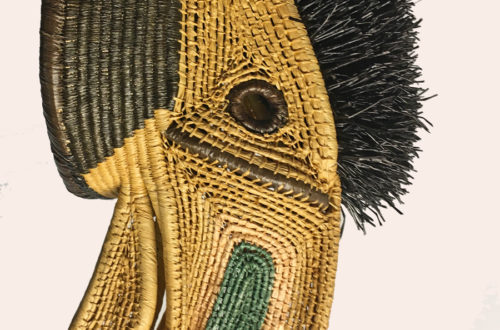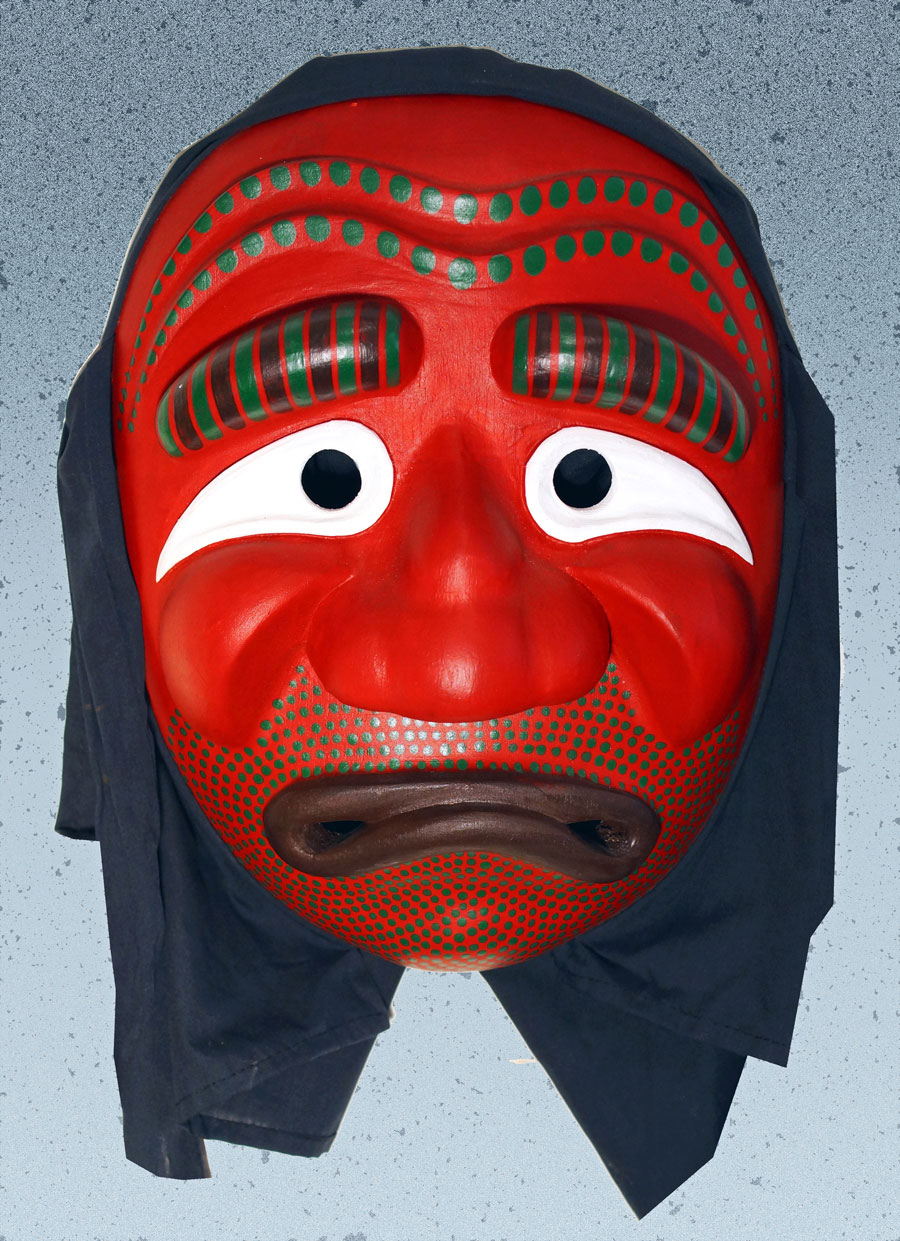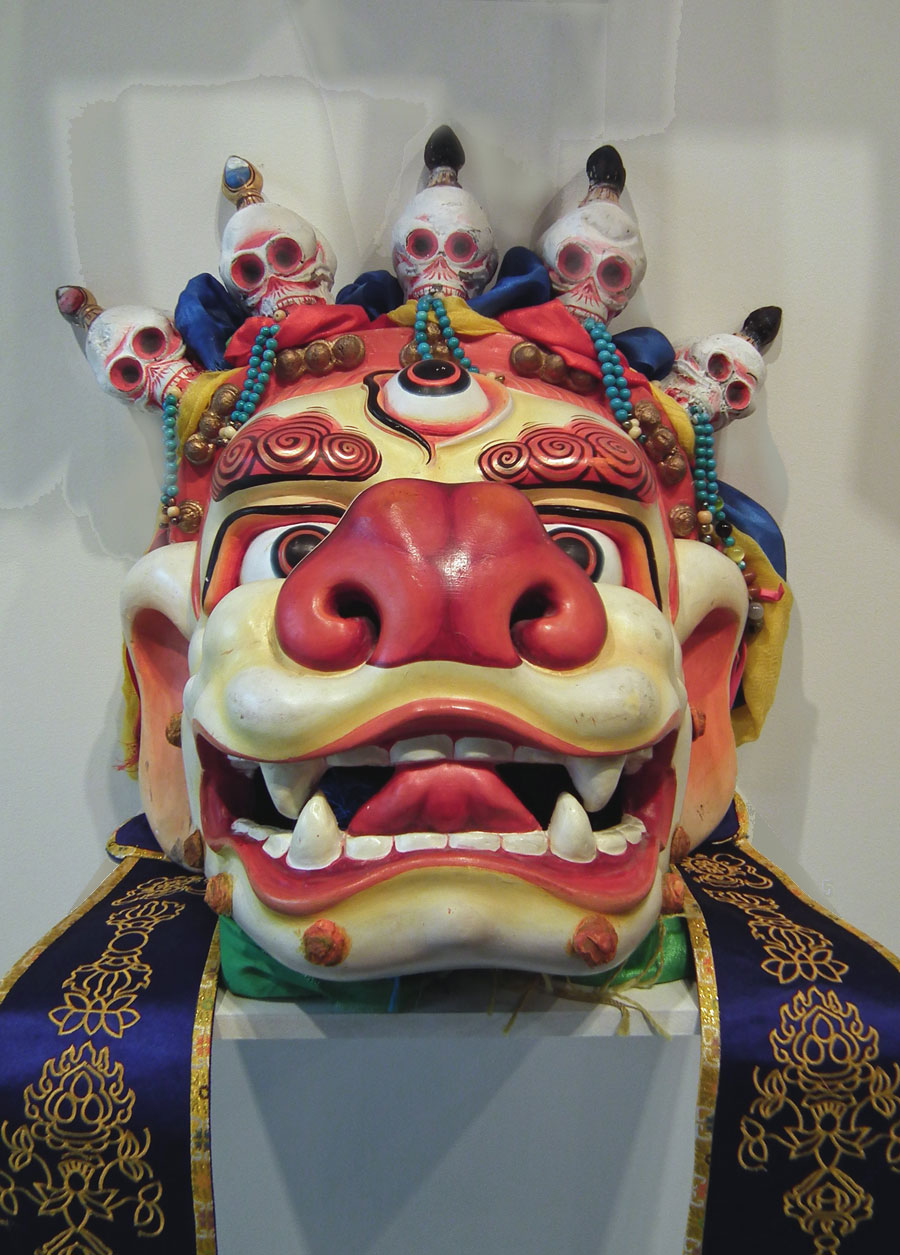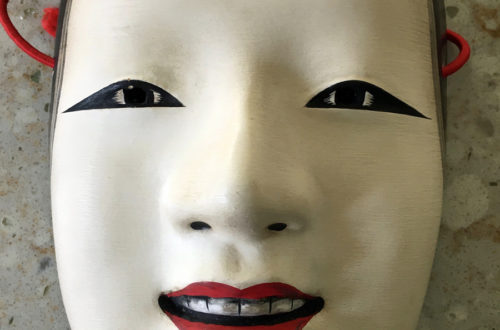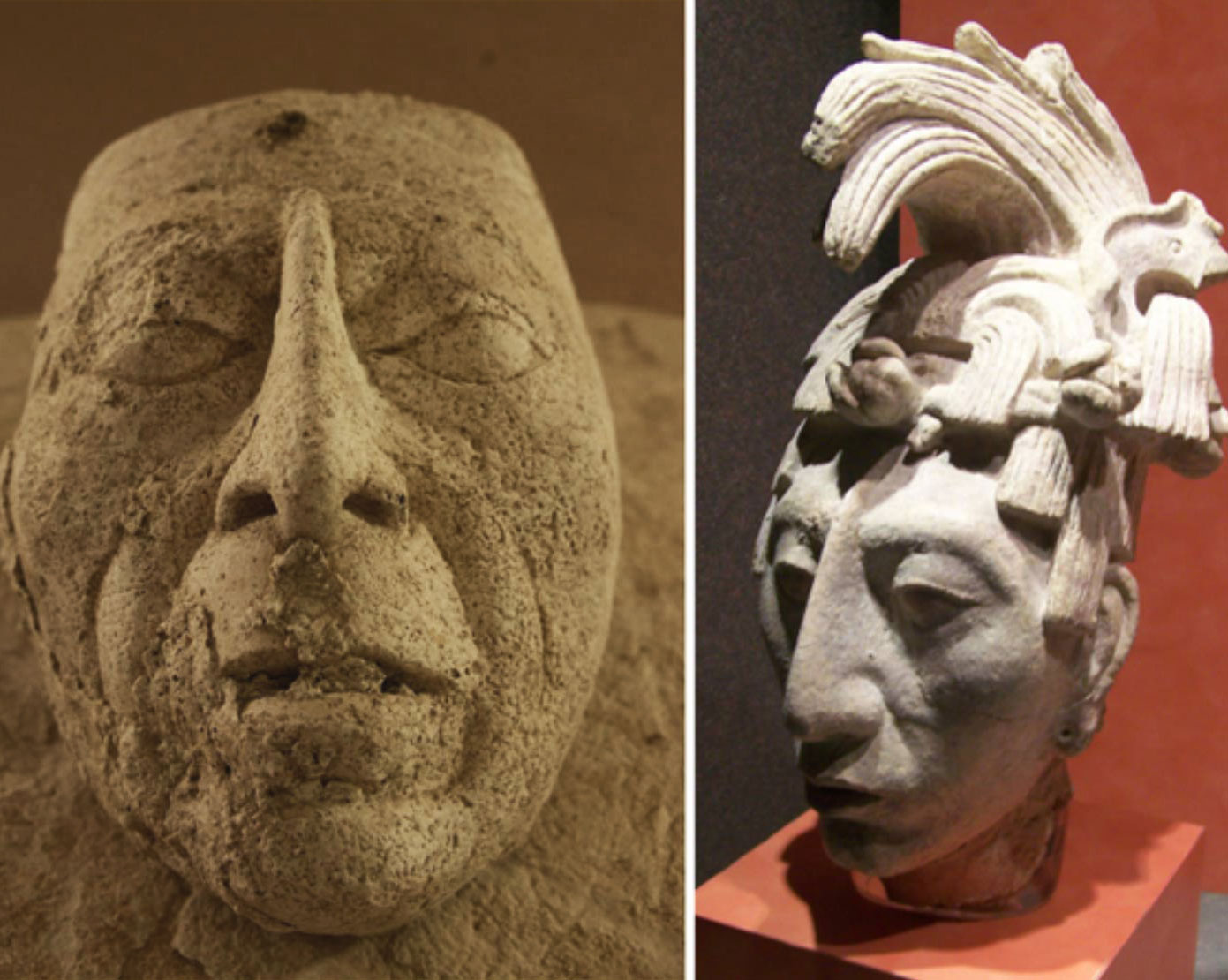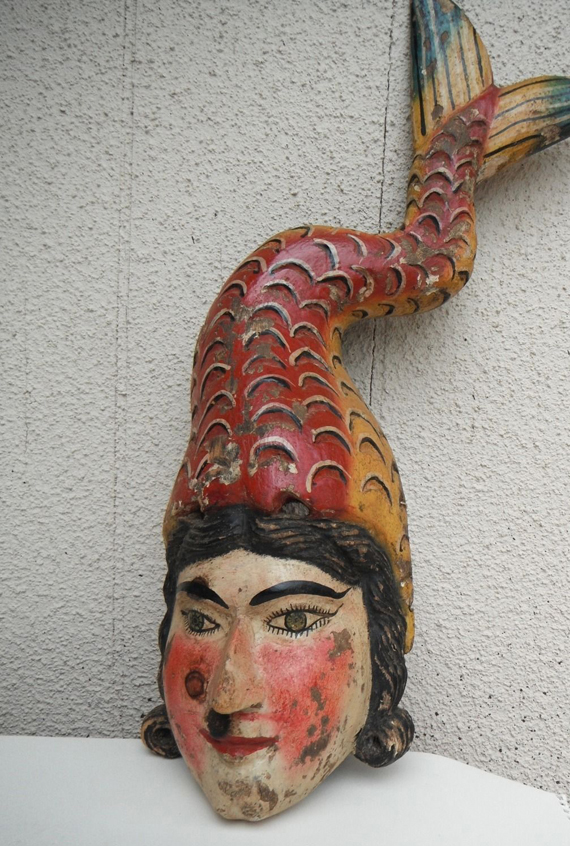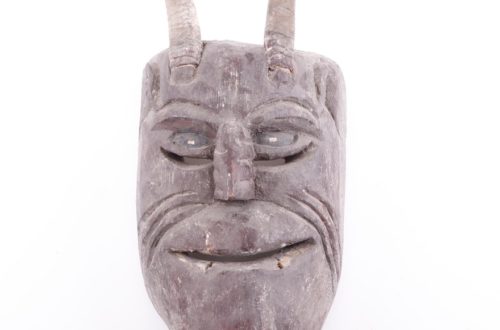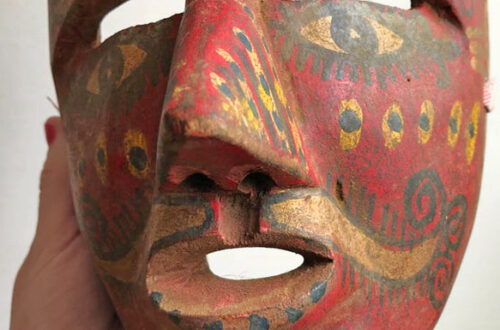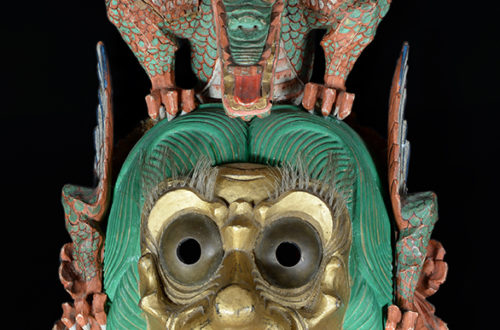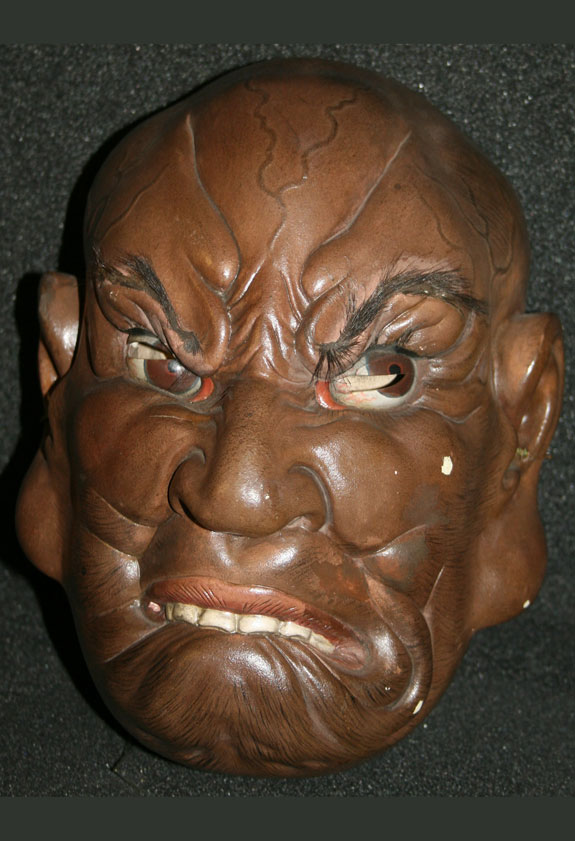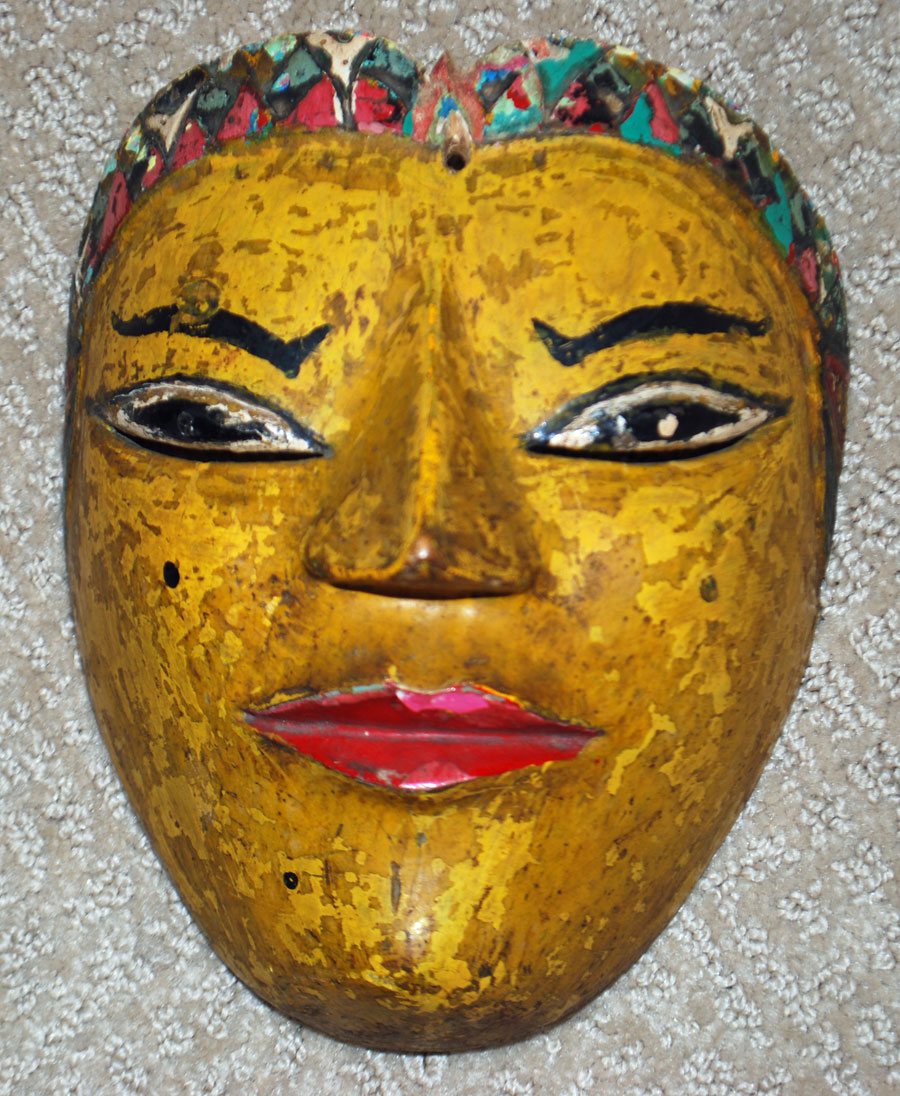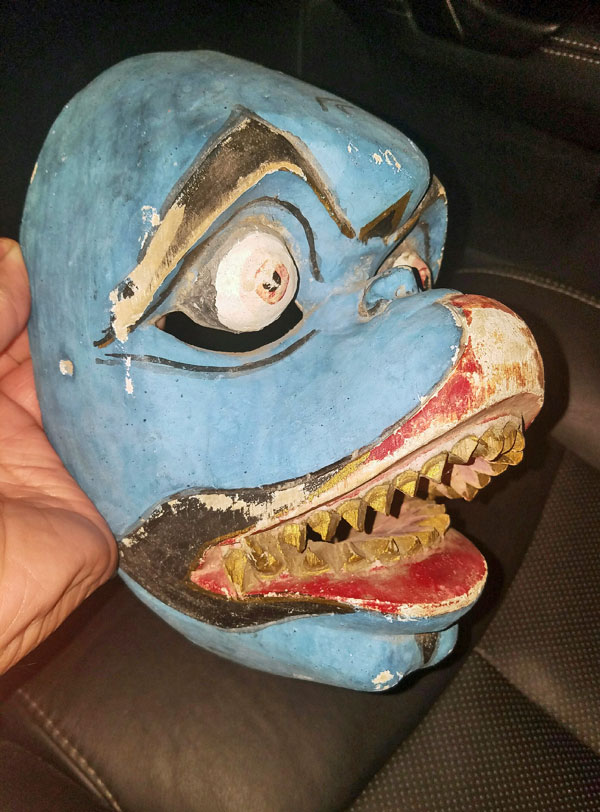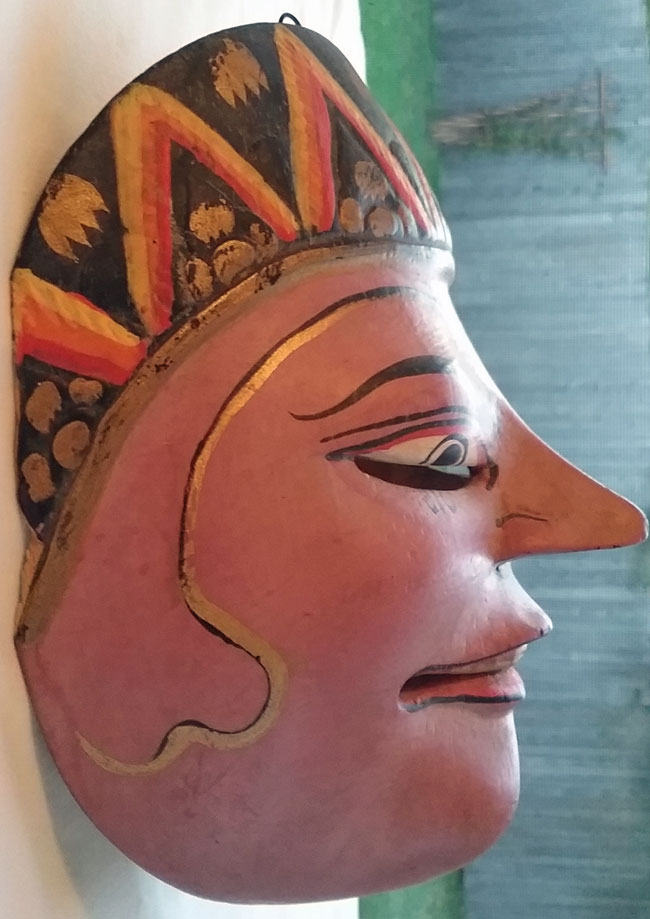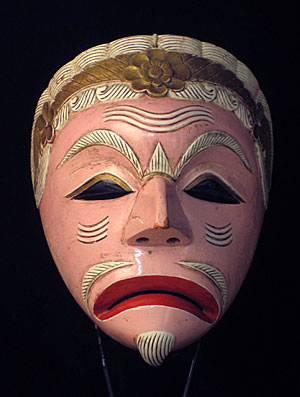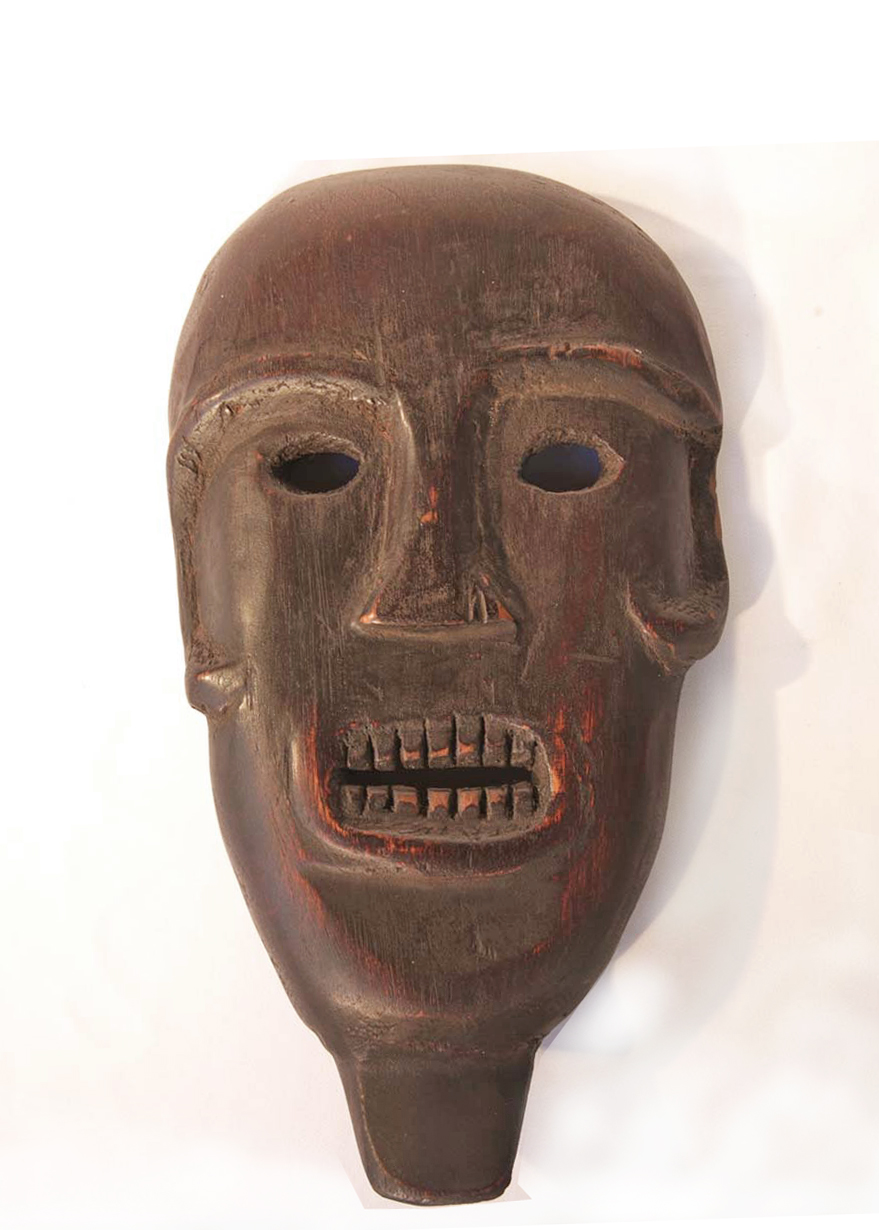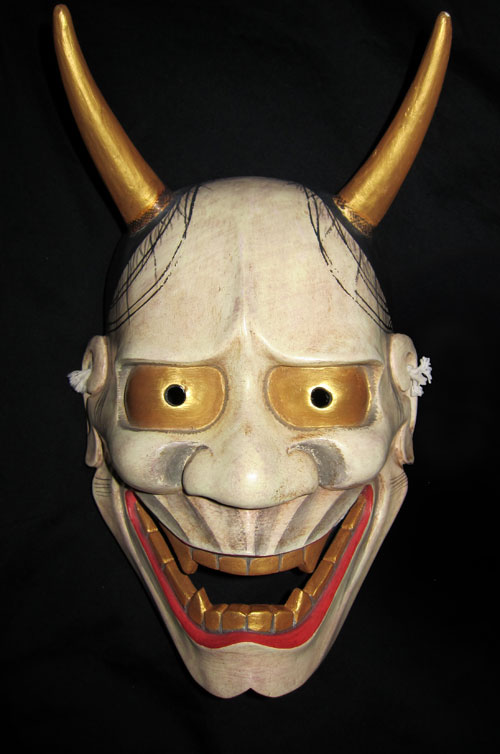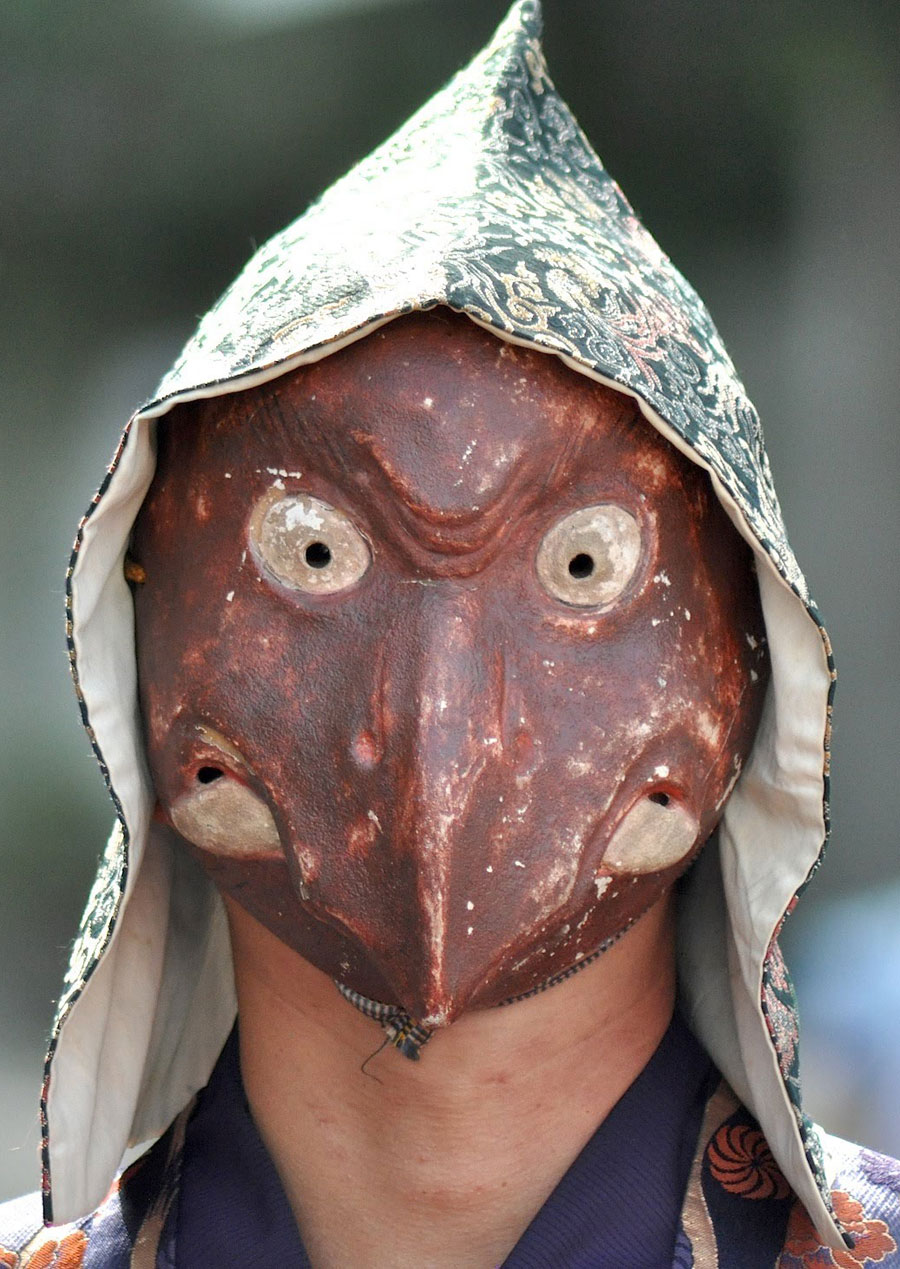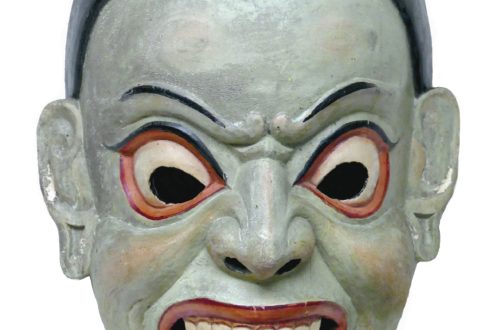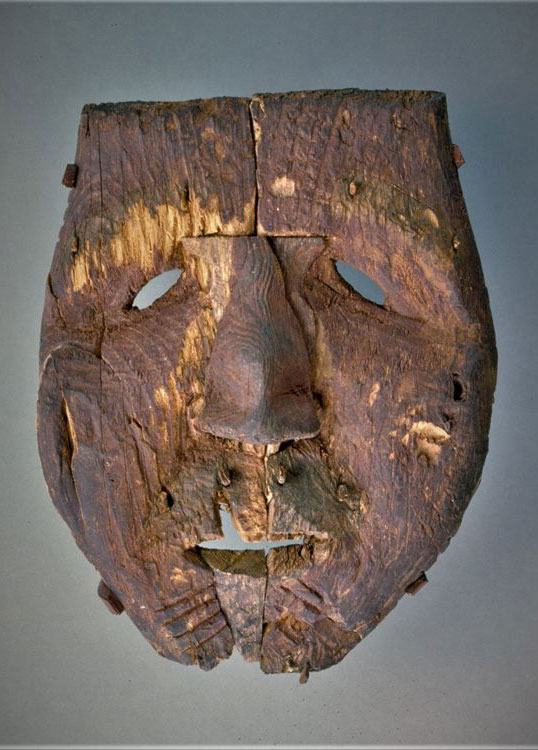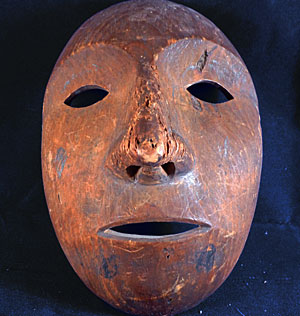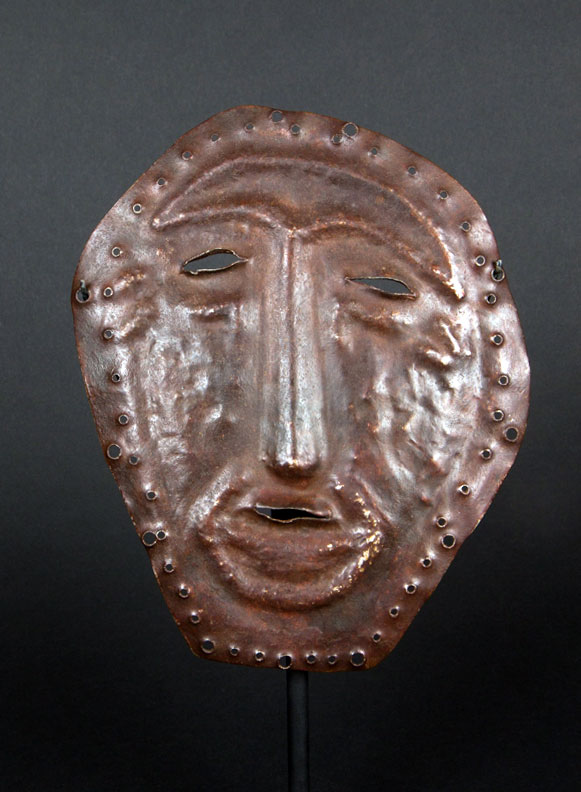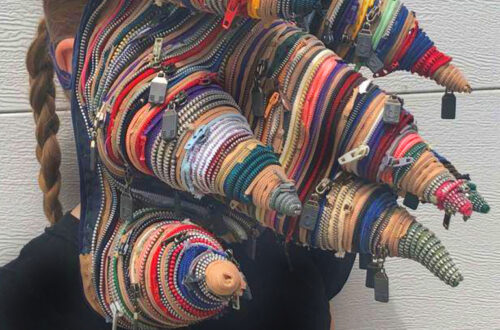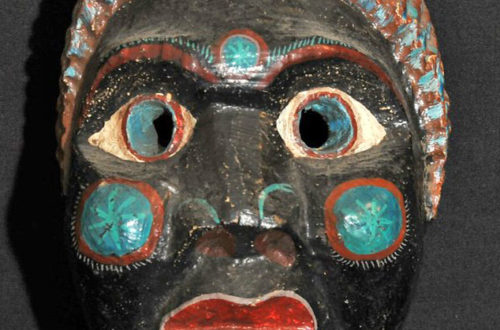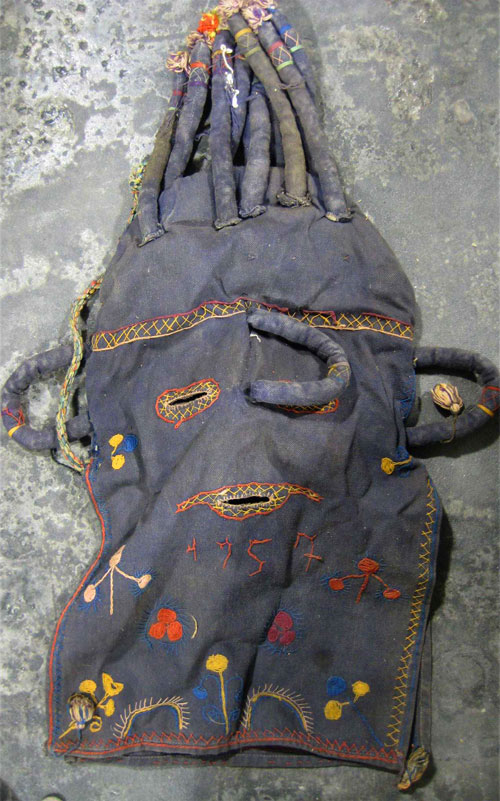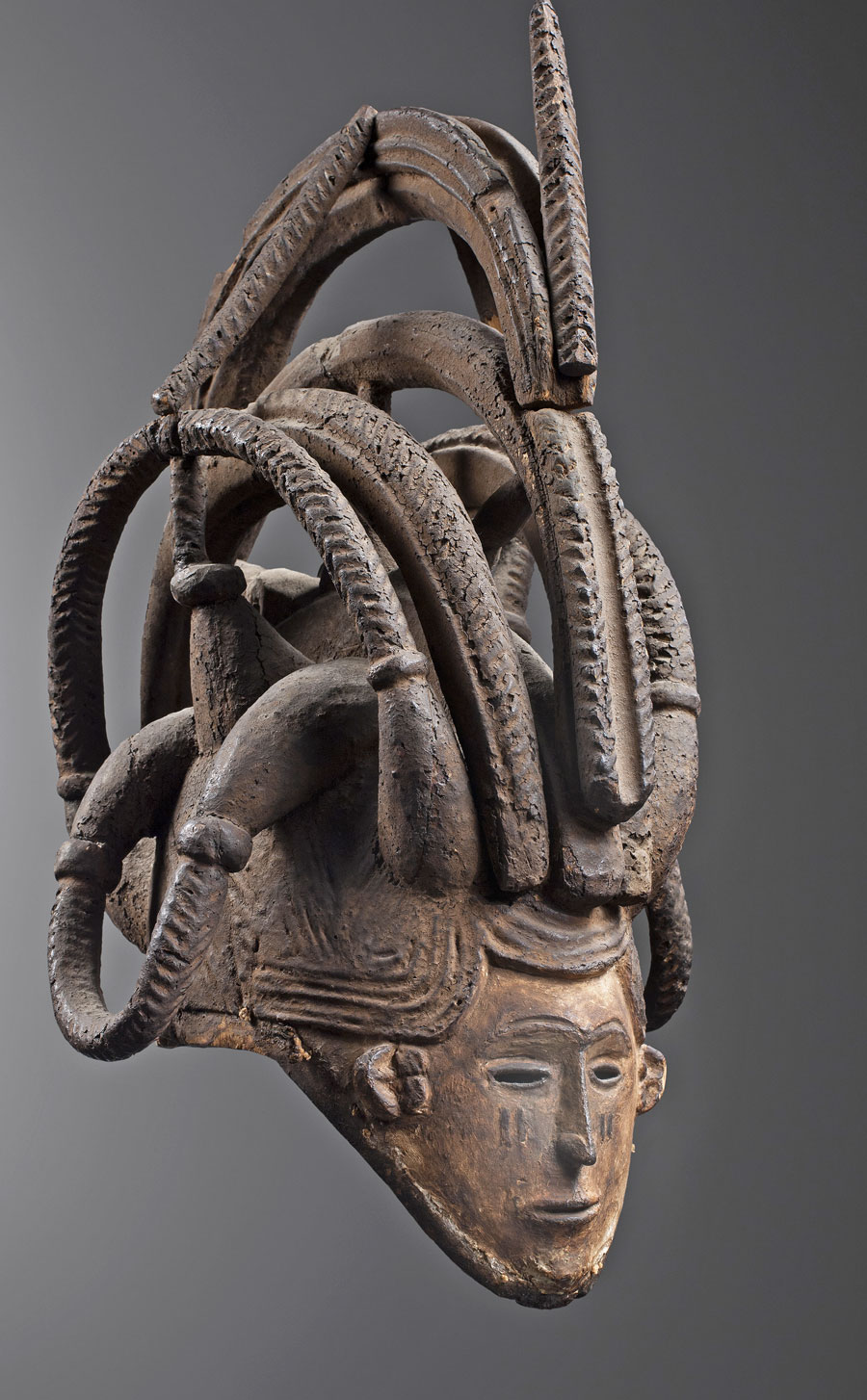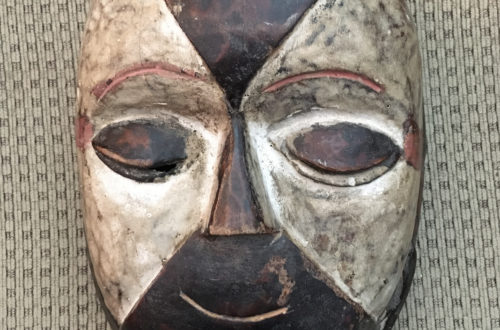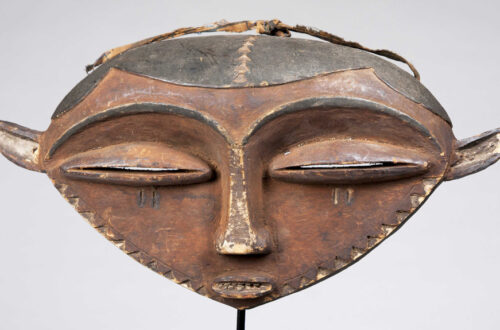Most Haitian masks are made of papier mache and painted. You can see some of them in the “Caribbean Category” of our archives. Ordinary people can afford some them for carnivals and other ceremonies. More expensive masks are made of steel taken from the side of oil barrels, same as the famous steel drums used by Haitian musicians. One of the masks shown here is steel. Almost all these are decorative and sold to the tourist trade. Others are carved wood and much older. Within the African Diaspora, Haitian culture is known for its strong connection to Yoruba, Congo, and other Cross river cultures which, over centuries, combined with influences…
-
-
Red Korean old monk mask
This old monk mask is worn by a character in the Pyolsandae dance performed in Yangju, South Korea. It is10 inches tall, painted wood with black cotton hood, and in new condition. Extras are always made for tourists and collectors, and they are quite affordable. In the dance drama this character becomes infatuated with the pretty girl and tries to seduce her. He is an ugly old guy. The yangju pyeolsandae nori is a very popular folk dance in korean history. There are over 20 characters. Red, black, white and other bright colors help to identify the character, many of which appear to have deformed features. Most of them are…
-
Ritual Mask of Mayan King
Archaeologists digging in Mexico’s Palenque ruins have uncovered the mask believed to represent the 7th-century Mayan ruler K’inich Janaab Pakal, commonly known a Pakal the Great — one of ancient Mexico’s most prolific figures. Having become King at the age of 12, under Pakal the Great’s 68-year-long reign of the ancient city of Palenque. As it prospered he instructed the building of its finest architecture. Palenque was a Mayan city state in southern Mexico dating from about 226 BC to AD 800. It is located near the Usumacinta River in the Mexican state of Chiapas.The newly discovered mask depicts Pakal in his old age at the end of his reign, a perfect rendition to accompany him…
-
Mongolian Buddhist mask
Mongolia, once the second largest empire in the world, is north of both Tibet and China. So the prominent religion of Buddhism is shared with Tibet, and the Mahakala mask is also made for ceremony in Mongolia. This is a good example of the northern version of this famous mask. Can you tell the difference? It is very close, so I have archived this mask under both “East Asia” and “India & Himalayas.” Here is a little more history. Since time immemorial Mongolia has been occupied by tribes whose nomadic existence was dictated by the rugged topography and extreme climate of this vast region. More often fragmented than unified, these…
-
Old Java mask with nice patina
Q: We bought the two golden masks from a large online dealer last year for fifteen dollars each. Some research indicated that the black mask which we have had for over two years now was from Bali in Indonesia. But that is all we know. The large golden mask is seven and a half inches high by 6 inches wide.. I am attaching photos including the mask I already sent, and front and back views of the other two masks. Thanks for the prompt reply and your interest. Robert, 1426 A: I like all three of your masks, but this one, a female character from Topeng dance drama, is my favorite. It is a popular…
-
Mask from Timor, East Asia
The island of Timor gave rise to a distinctive tradition of dance masks whose precise origins and significance remain uncertain. What information exists suggests that many of the masks originated in East Timor. Portraying both male and female ancestors, they were worn by men during dances and other ceremonies, including celebrations of victory in war. When in use, the masks were typically painted, adorned with strips of hide or bristles representing facial hair, and worn with a headdress or hood that covered the head to further conceal the dancer’s identity. Some masks were made from perishable materials, but wood examples, such as this highly polished and deeply patinated work, were…
-
Lost People of the North
There were people in Alaska and Northern Canada before the Inuit and other Eskimos. They are called Tunit and are long gone. But they have left behind a great deal of artifacts. This very old mask is one of them. The following is from Passing Strangeness– a very interesting website. The first hints that there was once an ancient culture in Canada’s north came from the Inuit who have replaced them. Until modern times they used boulder weirs and caribou channels for hunting, and Inuit folklore says they’d been built by another people whom they called the Tunit. The Tunit themselves appeared in some stories as peaceful giants who would…
-
Siberian shaman’s metal masks
This is a flat piece of metal pounded into an old man’s face. Many holes dot the entire edge of the mask which could have been connected to some kind of decoration. It was found in the early 20th century in Evenk, a village of the transbaikal region of Siberia. The indigenous people living there are similar to Native Alaskans. It would have been used by a local shaman in ceremonies to cure illness, protect against danger and encouraging prosperity. 10 inches high. Traditionally, the term shamanism can be defined as a single system which includes a special outlook. It is aimed at the direct perception of the world, understanding…
-
Chilean Indian mask
Masks of various materials have been used by the Mapuche people for centuries. Numerous stone masks have been excavated from archaeological sites in and around Mapuche lands and can be presumed to be precursors to the Mapuche masks of wood and other materials made more recently. The stone pieces are believed to have been burial masks, but masks of wood, leather, and possibly silver are still used today in various ceremonial contexts. Small maskettes are sometimes employed by the machi in performing healing rituals. The Mapuche successfully resisted many attempts by the Inca Empire to subjugate them, despite the lack of nationwide organization. They fought against the Spaniards for over…
-
Spectacular Igbo mask from Africa
This masterpiece was carved in the North West Region of Nigeria in the late 19th or early 20th century out of one piece of wood. It is 23 inches tall. ● Rediscovered Masterpieces of African Art, Dapper Museum, 1987, p. 155 ● African Art in American collections, W.M. Robbins & N.I. Nooter, 1989, no. 677 ● Facing the Mask, Franck Herreman, Museum for African Art, New York, 2002, no. 30 You can read more about this famous mask in any of the above books. This mask is one of the most complex and carefully carved wood sculptures I have ever seen. Also read about the Igbo people and their art. There are over 500…


